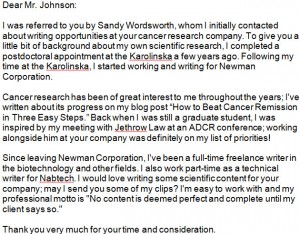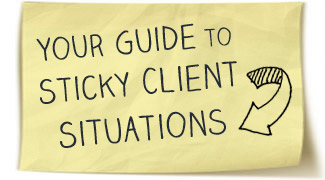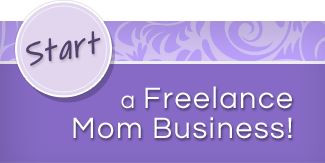
Many freelancers/business owners assume that job boards, Craigslist and online bid sites such as eLance and oDesk encompass the entire world of possible freelance work and new clients. What they might not realize or recognize is this:
Most work is not posted!
Yes, that’s right.
The best and most lucrative opportunities are typically not advertised because they don’t fit into the standard job titles and descriptions that would typically be approved and published by a business.
Let me give you an example.
Let’s say that a business suddenly has 20 white papers to create. It will probably not generate a “White paper writer” job position, because doing so would require hiring and retaining an employee strictly for the task of writing white papers- a task that is bound to become obsolete once those 20 white papers have been generated. So, this business will either throw the white paper writing task onto its already overworked employees (who may or may not be proficient in this task) or sit on the project and wonder what to do.
This is where you, the entrepreneur, come in. If you have expertise in generating corporate documents, you suddenly become the perfect candidate for writing those white papers. All that’s left is for you to make a connection with this business.
How can you, the freelancer and entrepreneur, make those vital network connections and secure all kinds of work from clients that might rarely, if ever, post a job opening?
Here is my five step plan for getting more work without filling out a single job application:
1. Introduce Yourself.
It may seem obvious, but the first thing you need to do to effectively network is to introduce yourself to your potential clients. The key here is to forge actual relationships with individuals, companies and organizations with whom you could one day see doing business with.
Introducing yourself involves a bit more than writing someone a quick email saying “Hi!” and “How are you?” The process itself actually goes by the acronym of LOI, which stands for Letter of Introduction. In the process of formulating your LOI, you state how you discovered the potential client, what is unique and/or interesting about her and her business, and how you and your business fit into all this. You also ask if you can send examples of your work. LOIs can be emailed or snail mailed.
The following is an example of an LOI a freelance writer in the FreelanceMom community recently used (with names and businesses changed for privacy):(click image to enlarge)
2. Become the Client.
Do you want to really stand out from the crowd and secure work almost instantly?
- Spend some time looking over your potential client’s business, website, social feeds, etc.
- Pretend that you are the client and you own this business; what do you like about it and what would you like to see improved?
- Take notes about your observations, then compile these observations and send them to your potential client.
- Make some recommendations and highlight how your services might fit in. For example, you might say the following:
“I noticed your investment strategy blog has not been updated for an entire year. Market research indicates that companies that have active blogs bring in 88% more traffic than those that do not have an active blog. As an experienced corporate blogger in the niche area of stock investment, I’d like to offer my services.” Such prospecting emails do not have to be long and drawn out. Such prospecting also wins me at least one client per month.
This is a writer example, but you could use this same example for any career or industry. Just put in your own relevant data and information.
One additional piece of advice: try to use LinkedIn InMail when prospecting for clients. LinkedIn InMail is far less used for everyday emailing than regular email, so your message is more likely to be seen.
In fact, LinkedIn states that its InMails are 30% more likely to receive a response than regular email. Those InMails also give you a more professional look- as well as an easy way for your potential clients to click on your name and instantly check out your credentials. You have the chance to send three InMails per month with your paid LinkedIn Business account. If your InMail does not receive a response, LinkedIn returns that InMail credit to your account.
3. Use Social Networks.
Via social platforms such as Twitter, Facebook and LinkedIn, you can easily find out what your potential client is doing and talking about. Join some of these discussions (e.g., Facebook groups) and offer your advice or recommendations.
Steer clear of direct advertising or asking for work unless approached by the client first.
Don’t know what to say?
Don’t worry.
I often use one of two main approaches for getting “chatty” with potential clients:
- Refer to either your own or someone else’s published content. Of course, the referenced content does need to be relevant to the discussion at hand. But that’s not hard to do, especially if you set up Google Alerts or SmartBrief to send you daily updates on subject matters that are relevant to your clients.
- You might also use these online alert systems to give you ideas for content or products that can be created and marketed to your clients at a later point in time.
- For example, when one of our freelancers in the FreelanceMom community was receiving daily online alerts about crowdfunding, she used this information to her advantage by writing a few paid blog posts about crowdfunding. This also led to her being asked to speak at a local business group on the subject of crowdfunding.
4. Actively Help Your Clients.
Make yourself invaluable by actively helping your potential clients or even finding work opportunities for them.
For example, if you know that your potential client is in charge of finding speakers for a conference, go through your own contacts and ask if anyone would be willing to give a talk at that particular conference. Then, recommend that speaker to your potential client.
There’s no guarantee that your client will repay your kindness with a job offer, of course. But your kindness will keep your name at the top of their list should a colleague require help from someone with your expertise.
Such referrals are priceless because they are often made for freelance work that would never be posted. Thus, if you are recommended, you’re almost a shoo-in for the job.
5. Keep in Touch With Former Clients.
Many entrepreneurs take a “one and done” approach with clients with whom they’ve concluded business. However, who says that a former client can’t become a new/ongoing one?
Keeping in touch with your old clients and finding out what new business ventures they’re up to is not only a great way to keep in touch but also helps drum up potential new business.
You don’t have to be pushy about getting back “in the loop” with old clients. Before you get back in touch with them, though, go through steps 2-4 outlined above.
Then write them a quick “hello and how are you” email and ask how business is going. Mention something you observed about their business or industry. If you’ve done anything significant, such as earning a degree or an award, certainly throw that accolade in.
Is There Anything Else You Can Do?
Sure there is. There are many more ways you could network.
For example, you might consider sending new contacts a free sample of your work.
If you’re a writer, you could quote or mention one of your prospective clients in a story (make sure it’s a positive story first!). If you really like your client’s products or business, feel free to give him/her a referral in one of your social media blasts.
It doesn’t take much to spread goodwill- as well as network- with potential clients.
Image courtesy of freedigitalphotos.net






